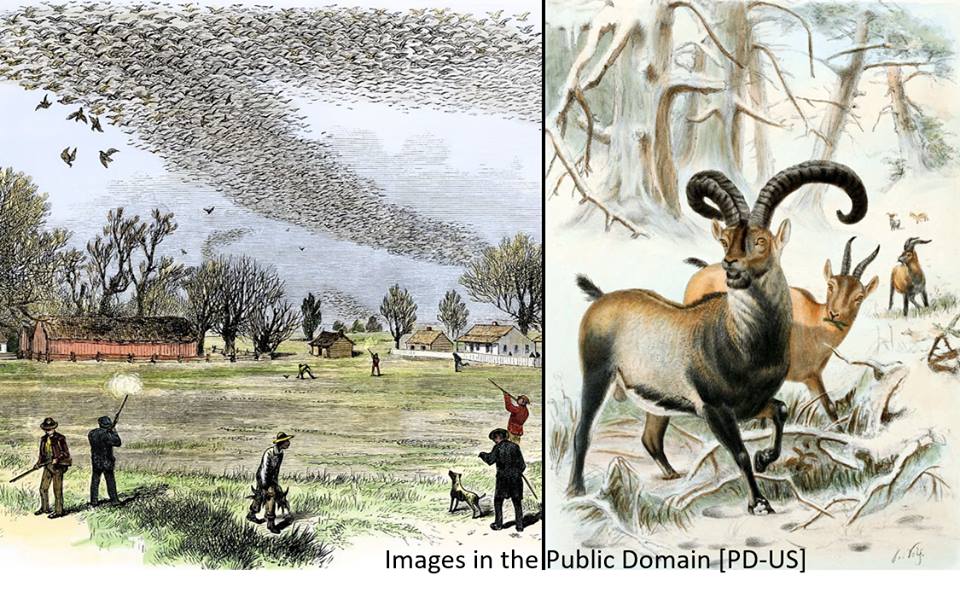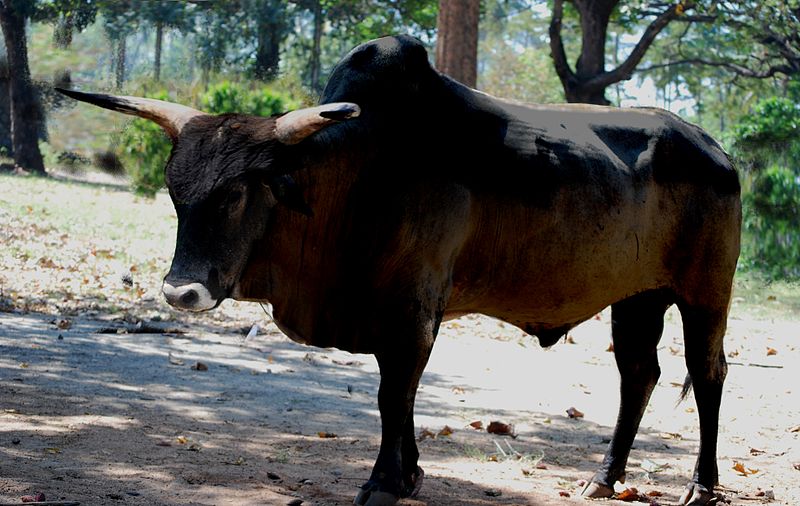Listen to Episode 35 on PodBean, Spotify, YouTube, or your favorite podcast-place!
It’s time for another extinction episode!
Is extinction truly forever? In this episode, we discuss the stirrings of the real-life science seeking to bring back some semblance of the creatures of the past: De-extinction.
In the news:
A new ancient croc fills in a piece of the evolutionary history of marine crocs.
New fossils (and a new species) from a time of particularly large sea snakes.
New ancient whale species sheds light on the origins of baleen whales.
Two studies extend the record of human virus DNA by several thousand years.
What is De-extinction?
Pretty much what it sounds like: bringing organisms (particularly animals) back from extinction. This is sometimes used to refer to limited extinctions – wolves were once extinct in Yellowstone; condors were once extinct in the wild – but there are more famously (and controversially) efforts to try to bring back totally extinct groups. These efforts are centered around genetic technology: cloning, genetic engineering, and selective breeding.
Why do this? The most common answer is to fix ecosystems. As we discussed in Episode 8, extinction leaves ecosystems out of whack, and paleontology might be able to help us put things right again. Returning extinct keystone species to natural environments may be a dramatic (and, again, controversial) way to do just that.
Cloning
We can absolutely clone animals, but true cloning (à la Dolly the sheep) requires viable cells, which requires living or very recently-living animals. This was near-successful in 2003: scientists facilitated the birth of a baby bucardo, a clone of the last member of the subspecies, Celia, who had died more than three years earlier. The baby survived for 10 minutes after its birth, and for those ten minutes the extinct bucardo had returned.

Ancient DNA
As you know from Episode 34, we can totally get DNA from fossils hundreds or thousands of years old. This DNA can’t be used for true cloning, but there are plans in the works to use that DNA to modify existing species. The Passenger Pigeon Project, for example, hopes to use passenger pigeon DNA to modify the genome of the closely-related (and still living) band-tailed pigeon, to engineer animals that live like passenger pigeons, hopefully fulfilling the same crucial ecological role that the extinct birds did when they roamed North America by the billions.
Similar plans are famously underway to “bring back” the woolly mammoth by transferring mammoth genes to Asian elephants, creating elephants that can live – and hopefully serve as key environmental engineers – in northern ecosystems.

Other candidates for this same process include: the Heath hen, the great auk, the thylacine, and more.
Back-breeding
How about good old-fashioned artificial selection? The Tauros Programme is intended to create a breed of cattle that look and act like their extinct ancestors, the aurochs, once an important grazer in northern grasslands. Other groups are considering doing the same to re-fill the roles of extinct wild horses, quaggas, and more.

“But you’re scientists were so preoccupied with whether or not they could…”
Lots of experts are not particularly fond of this idea, for many reasons. Will this even work? Is it safe to introduce “new” species to ecosystems? What are the ethical ramifications? Is this a valuable use of resources? And so on.
For more on various people’s perspectives on the subject:
TEDx De-extinction. An independently-organized TED conference in 2013, featuring many talks from a variety of folks working on and thinking about these subjects. If you want to learn more, there’s a ton here!
Should we bring extinct species back from the dead? A general and mostly positive overview of the topic.
The perils of de-extinction. A detailed essay urging caution.
The case against de-extinction. An impassioned argument against the idea.
More places to go!
Revive & Restore – an organization dedicated to “genetic rescue” of endangered – and extinct – animals.
The Story of Celia, the Cloned Bucardo
Why Passenger Pigeons Went Extinct – including that great passage we read in the episode.
—
If you enjoyed this topic and want more like it, check out these related episodes:
- Episode 34 – Ancient DNA
- Episode 8 – Conservation Paleontology
- Episode 23 – Jurassic Park
- Episode 55 – The “Sixth Extinction” (Modern Biodiversity Crisis)
We also invite you to follow us on Twitter, Facebook, or Instagram, buy merch at our Zazzle store, join our Discord server, or consider supporting us with a one-time PayPal donation or on Patreon to get bonus recordings and other goodies!
Please feel free to contact us with comments, questions, or topic suggestions, and to rate and review us on iTunes!
Please don’t do this:
http://www.news.hypercrit.net/2012/11/13/einstein-on-misattribution-i-probably-didnt-say-that/
and I appreciate that you pointed this out, but it STILL bears repeating:
https://www.psychologytoday.com/us/blog/in-therapy/200907/the-definition-insanity-is
The quote is wrongly attributed, before that knowingly stolen, and from the first simply wrong.
—
Your podcast makes me happy. When it appears in my feed I beam like a maniac.
/Please note that this does not prove that I am clinically insane and that technically many maniacs do not smile in any way different from someone not exhibiting any obvious mental disorder./
LikeLike
These are all very good points, thanks for pointing them out! One can never be too careful with catchy aphorisms.
We’re glad we make you smile – manic or otherwise!
LikeLike
I find myself wondering if it would be easier to get some elephants up to Siberia and provide them partial support for surviving the cold and allowing them to evolve into a new equivalent of a mammoth, rather than trying to recreate the extinct species. Both projects would take multiple human generations, but evolving an extant creature into a new niche would mean there would be no issues regarding things like intestinal biota and social structures.
By the way, great podcast. I am binge-listening from number 1 and find myself rather sad to know that soon I will have to wait a fortnight to get a new episode.
LikeLike
An interesting thought! That would take a very long time – and might not skirt all of the ethical concerns about treatment of the elephants involved – but would maybe be a more “natural” way about it.
Thanks for listening! We’ve got a lot of extra content coming out these next couple of months, so your binge can continue a bit longer.
LikeLike